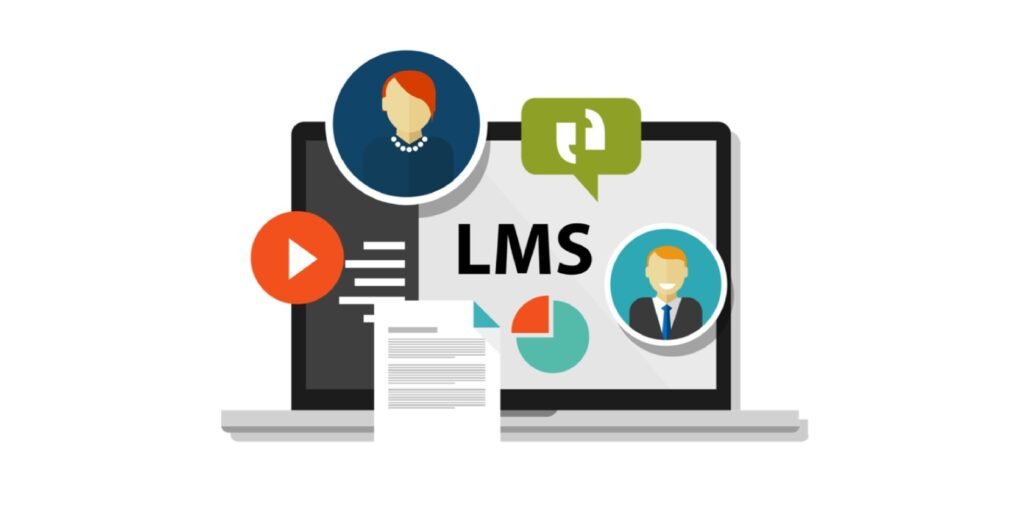As LMS becomes increasingly important in learning environments, it’s important to know which user interface options are available to you.
This post will introduce you to ten of the most popular user interface features and show you how they can be used to improve the usability of your LMS.
By understanding these features, you’ll be able to choose the best one for your needs and get the most out of your LMS. Let’s get started!
- Curriculum Pathways
One of the most popular user interfaces features available in LMSs is curriculum pathways. This option allows users to see a list of learning paths and associated content, making it easy to navigate through different sections of your LMS.
This option is great for people who want a quick overview of the courses they are taking or for teachers who want to assign specific courses or modules without having to search through long lists of entries.
Pathways can be used as standalone features or embedded within other pages and groups on your LMS, making them used in a variety of settings.
- Course Management
Another popular LMS user interface feature is course management. This feature allows users to see all the information about a specific course, including student progress and grades, along with options for managing and grading exams and modules.
This option is great for teachers who want complete control over their courses, as well as students who need access to all the relevant information related to a particular subject matter.
Course management can be used in conjunction with other features on your LMS or standalone, making it easy to manage and update content as needed.
- Course Progress Tracking
Another popular LMS user interface option is course progress tracking. This feature allows users to see the status of their courses, including how many students are currently enrolled, what modules have been completed, and how much work remains.
This information can be used to gauge student achievement and track changes over time, making it a valuable tool for teachers who want to keep tabs on student progress.
Course progress tracking can also be helpful for administrators who need to monitor all aspects of a school’s curriculum remotely
- Collaborative editing and grading
Collaborative editing and grading is another popular LMS user interface option. This feature allows users to work together on a single course, sharing responsibility for authoring and grading content.
This approach can be helpful for groups of students who are required to write collaboratively or for teachers who want to assign multiple tasks related to a specific subject matter.
In addition, collaborative editing and grading can be used in conjunction with other features on your LMS or standalone, making it easy to manage the entire process from start to finish
- Assignment and grading tools
LMSs typically come with a variety of assignment and grading tools, including automated assignment submission, automatic grade tracking, and more.
This feature allows users to easily submit assignments online or through the LMS’s interface, track student grades online, and manage all related information in one place.
Assignment management can be especially helpful for teachers who need to keep track of all students’ progress across multiple subjects or for administrators who want to monitor school performance over time.
- Multi-platform compatibility
LMSs are typically compatible with a wide range of devices and operating systems, making them easy to use from anywhere in the world.
This feature makes LMSs an ideal tool for teachers who want to provide content and support for students on multiple platforms, as well as for administrators who need to manage large class populations from any location.
- Customizable features
LMS like Inquisiq offers a variety of customizable features to help users tailor the interface and experience to their needs.
This includes options for customization of the user interface, including adding or removing buttons and menus, changing font sizes and colors, etc.
Additional customizations may include adjusting course settings such as time limits or content types.
- Wide range of features
LMSs come with a wide range of features, including support for audio/visual materials, online chat and forums, threaded discussions, and more.
This allows teachers to easily manage student interactions in a variety of ways, from discussion boards to live chats.
Additionally, LMSs often offer built-in tools for tracking attendance and grades as well as creating advanced reports and dashboards.
- Robust and secure
LMSs are typically very robust and secure, able to handle a high volume of traffic and user interactions.
This makes them an ideal tool for use in schools with large student populations or in situations where security is a top priority.
- Fast and easy to use
LMSs are typically fast and easy to use, making them an ideal tool for busy teachers who need to manage a large class roster quickly and easily.
Conclusion
After reading this article, we hope you’ve become more knowledgeable about the user interface options that are available in these learning management systems. We also hope that now you have discovered a few of your favorites and can use them effectively for teaching, tracking, grading, and other tasks.
What has been your favorite user-interface option? Share it with us!

